
William Joseph O'Reilly OBE was an Australian cricketer, rated as one of the greatest bowlers in the history of the game. Following his retirement from playing, he became a well-respected cricket writer and broadcaster.
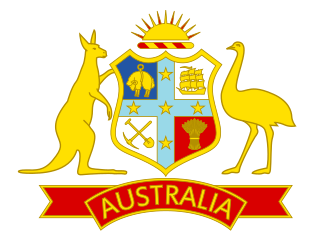
The Australia men's national cricket team represents Australia in men's international cricket. As the joint oldest team in Test cricket history, playing in the first ever Test match in 1877, the team also plays One-Day International (ODI) and Twenty20 International (T20I) cricket, participating in both the first ODI, against England in the 1970–71 season and the first T20I, against New Zealand in the 2004–05 season, winning both games. The team draws its players from teams playing in the Australian domestic competitions – the Sheffield Shield, the Australian domestic limited-overs cricket tournament and the Big Bash League.
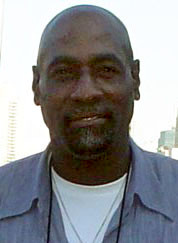
Sir Isaac Vivian Alexander Richards is an Antiguan retired cricketer who represented the West Indies cricket team between 1974 and 1991. Batting generally at number three in a dominant West Indies side, Richards is widely regarded as one of the greatest batsmen of all time. Richards helped win his team both the 1975 Cricket World Cup and the 1979 Cricket World Cup.

William Eric Hollies was an English cricketer, who is mainly remembered for taking the wicket of Donald Bradman for a duck in Bradman's final Test match innings, in which he needed only four runs for a Test average of 100. Hollies played all his first-class cricket career for Warwickshire, taking 2,323 wickets at less than 21 apiece.

Clarence Victor "Clarrie" Grimmett was a New Zealand-born Australian cricketer. He is thought by many to be one of the finest early spin bowlers, and usually credited as the developer of the flipper.
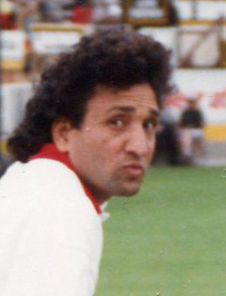
Abdul Qadir Khan SI was an international cricketer who bowled leg spin for Pakistan. Qadir is widely regarded as a legendary leg spinner from the 1970s and 1980s and was a role model for up and coming leg spinners. Later he was a commentator and Chief Selector of the Pakistan Cricket Board, from which he resigned due to differences of opinion with leading Pakistan cricket administrators.

Hedley Verity was a professional cricketer who played for Yorkshire and England between 1930 and 1939. A slow left-arm orthodox bowler, he took 1,956 wickets in first-class cricket at an average of 14.90 and 144 wickets in 40 Tests at an average of 24.37. Named as one of the Wisden Cricketers of the Year in 1932, he is regarded as one of the most effective slow left-arm bowlers to have played cricket. Never someone who spun the ball sharply, he achieved success through the accuracy of his bowling. On pitches which made batting difficult, particularly ones affected by rain, he could be almost impossible to bat against.

Mulvantrai Himmatlal "Vinoo" Mankad was an Indian cricketer who appeared in 44 Test matches for India between 1946 and 1959. He was best known for his world record setting opening partnership of 413 runs with Pankaj Roy in 1956, a record that stood for 52 years, and for running out a batsman "backing up" at the non-striker's end. Mankadding in cricket is named after him. In June 2021, he was inducted into the ICC Cricket Hall of Fame.
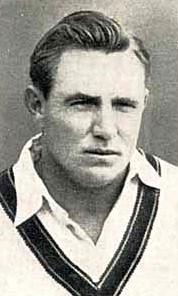
Raymond Russell Lindwall was a cricketer who represented Australia in 61 Tests from 1946 to 1960. He is widely regarded as one of the greatest fast bowlers of all time. He also played top-flight rugby league football with St. George, appearing in two grand finals for the club before retiring to fully concentrate on Test cricket.
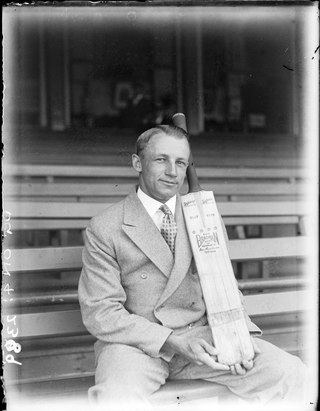
The Australian cricket team in England in 1948 is famous for being the only Test match side to play an entire tour of England without losing a match. This feat earned them the nickname of "The Invincibles", and they are regarded as one of the greatest cricket teams of all time. According to the Australian federal government, the team "is one of Australia's most cherished sporting legends". The team was captained by Don Bradman, who was making his fourth and final tour of England.
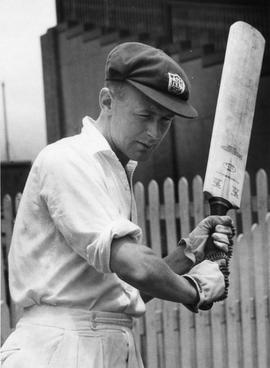
Arthur Robert Morris was an Australian cricketer who played 46 Test matches between 1946 and 1955. An opener, Morris is regarded as one of Australia's greatest left-handed batsmen. He is best known for his key role in Don Bradman's Invincibles side, which made an undefeated tour of England in 1948. He was the leading scorer in the Tests on the tour, with three centuries. His efforts in the Fourth Test at Headingley helped Australia to reach a world record victory target of 404 on the final day. Morris was named in the Australian Cricket Board's Team of the Century in 2000 and was inducted into the Australian Cricket Hall of Fame in 2001.

Sir Alec Victor Bedser was a professional English cricketer, primarily a medium-fast bowler. He is widely regarded as one of the best English cricketers of the 20th century.
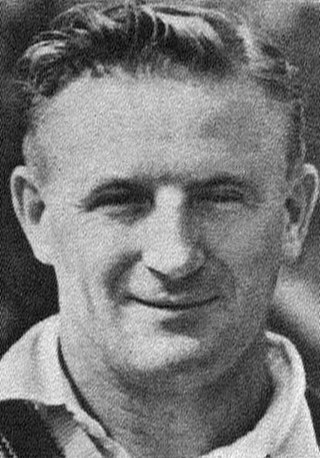
Colin Leslie McCool was an Australian cricketer who played in 14 Test matches between 1946 and 1950. McCool, born in Paddington, New South Wales, was an all-rounder who bowled leg spin and googlies with a round arm action and as a lower order batsman was regarded as effective square of the wicket and against spin bowling. He made his Test début against New Zealand in 1946, taking a wicket with his second delivery. He was part of Donald Bradman's Invincibles team that toured England in 1948 but injury saw him miss selection in any of the Test matches.

Leslie O'Brien "Chuck" Fleetwood-Smith was a cricketer who played for Victoria and Australia. Known universally as "Chuck", he was the "wayward genius" of Australian cricket during the 1930s. A slow bowler who could spin the ball harder and further than his contemporaries, Fleetwood-Smith was regarded as a rare talent, but his cricket suffered from a lack of self-discipline that also characterised his personal life. In addition, his career coincided with those of Bill O'Reilly and Clarrie Grimmett, two spinners named in the ten inaugural members of the Australian Cricket Hall of Fame; as a result he played only ten Test matches but left a lasting impression with one delivery in particular. His dismissal of Wally Hammond in the fourth Test of the 1936–37 Ashes series has been compared to Shane Warne's ball of the century. He has the unwanted record of conceding the most runs by a bowler in a Test match innings.
The English cricket team in Australia in 1946–47 was captained by Wally Hammond, with Norman Yardley as his vice-captain and Bill Edrich as the senior professional. It played as England in the 1946–47 Ashes series against the Australians and as the MCC in their other matches on the tour. They were regarded as a sound team which was just as strong as Australia, but due to the Second World War they were an ageing side and their bowling depended heavily on Alec Bedser and Doug Wright, who were overused and exhausted as a result. Australia beat England 3-0 in a five-match series to retain the Ashes; England suffered the worst defeat in a Test series since losing 4–1 to Australia in 1924–25. Since 1881, Tests in Australia were played to finish. That rule was changed for this series, and for the first time in 65 years, a test played in Australia ended in a draw when the third test was drawn.

A cricket team representing England toured Australia in the 1932–33 season. The tour was organised by the Marylebone Cricket Club and matches outside the Tests were played under the MCC name. The tour included five Test matches in Australia, and England won The Ashes by four games to one. The tour was highly controversial because of the bodyline bowling tactics used by the England team under the captaincy of Douglas Jardine. After the Australian tour was over, the MCC team moved on to play in New Zealand, where two further Test matches were played.

The Fifth Test of the 1948 Ashes series, held at The Oval in London, was the final Test in that cricket series between Australia and England. The match took place on 14–18 August, with a rest day on 15 August. Australia won the match by an innings and 149 runs to complete a 4–0 series win. It was the last Test in the career of Australian captain Donald Bradman, generally regarded as the best batsman in the history of the sport. Going into the match, if Australia batted only once, Bradman needed only four runs from his final innings to have a Test batting average of exactly 100, but he failed to score, bowled second ball for a duck by leg spinner Eric Hollies.
Bill Johnston was a key member of Donald Bradman's famous Australian cricket team, which toured England in 1948. The Australians went undefeated in their 34 matches during the English summer; this unprecedented feat by a Test side touring England earned them the sobriquet The Invincibles.

The Fourth Test of the 1948 Ashes series was one of five Tests in a cricket series between Australia and England. The match was played at Headingley Cricket Ground at Leeds from 22 to 27 July with a rest day on 25 July. Australia won the match by seven wickets to take an unassailable 3–0 series lead. In successfully chasing a target of 404, they set a new world record for the highest victorious runchase in Test history, a record lasting until 1976.















